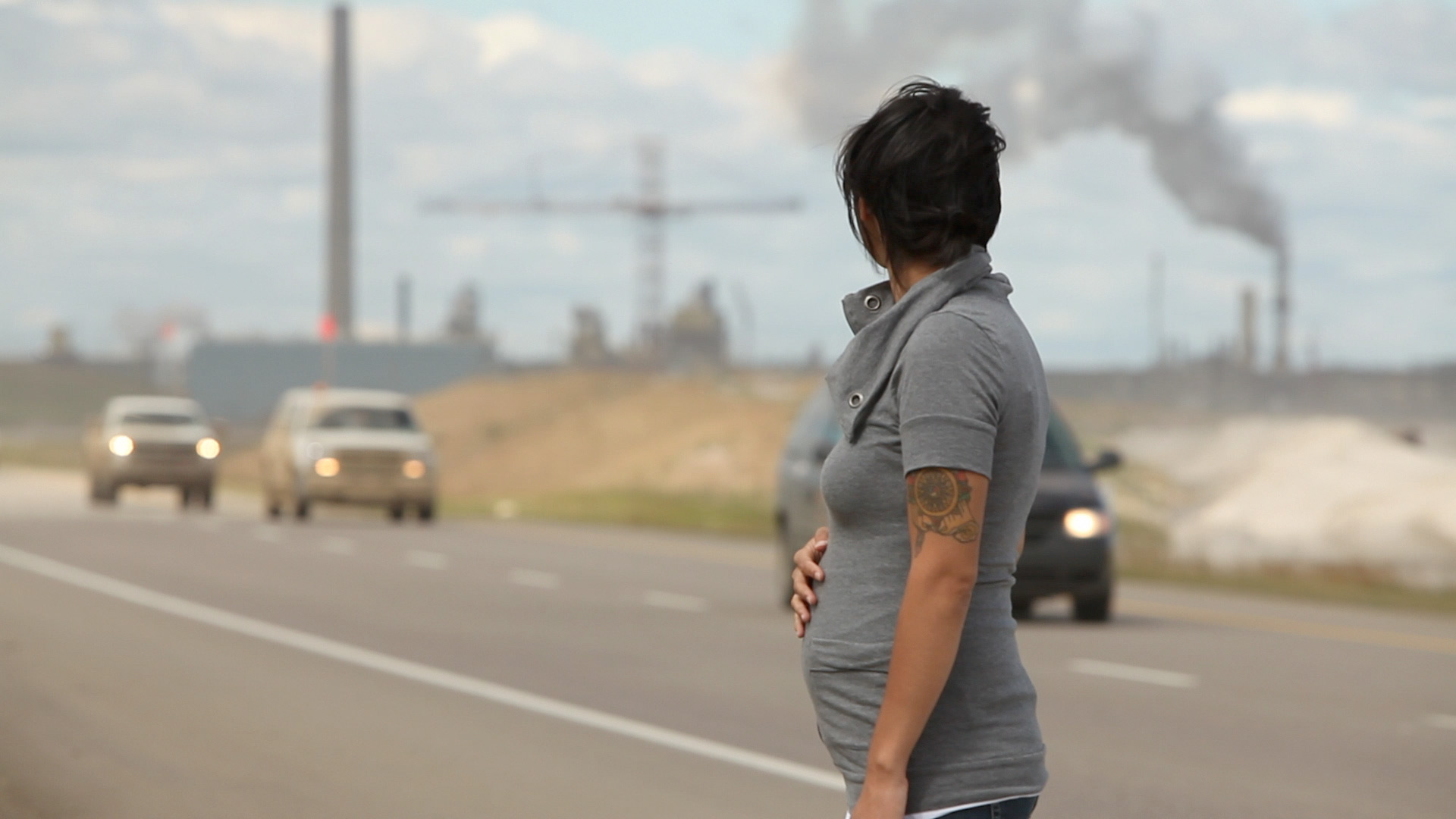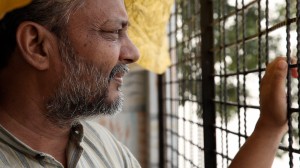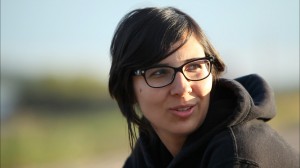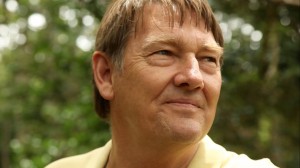
Unlike most environmental films, Elemental does not push an agenda. Instead the film traces the stories of three characters, each working on different continents and on entirely different issues. Beyond environmentalism, what unites the protagonists is their fierce obsession with their respective causes.
As we hop back and forth between their stories, we are exposed to their unique character flaws. We watch, often uncomfortably, how all-consuming their quest can be, how insidiously the fights they participate in as environmentalists enter their personal lives.
Eriel Deranger, an Aboroginal woman from Northern Alberta, is passionately fighting against the Tar Sands development, though largely neglecting her teenage daughter in the process. Rajendra Singh, a hot-tempered, rogue Indian government official, makes a 40-day pilgrimage along the Ganges to rouse public support to save his country’s sacred river from waste and destruction. And Jay Harman is a seemingly brilliant but aloof Australian engineer and inventor who has run his company nearly bankrupt. He is desperately trying to convince financial investors that his “atmospheric mixer” invention will both halt global warming and generate profits.
Before its screening at the Environmental Film Festival at Yale (EFFY 2013), I sat down with one of Elemental’s co-directors and co-producers, Emmanuel Vaughan-Lee. We discussed why these three particular characters were chosen as subjects, the importance of an environmental film that focuses on the personal, human side of activism, and what it was like to film Robert F Kennedy Jr. drunk at a fundraiser.
Sage: Why did you seek out these three particular stories? What brought them together for you, considering each person worked on very different things in very different parts of the world?
Emmanuel Vaughan-Lee: Well we were, in some ways, more interested with the people than we were with the issues they were involved in. We were interested in people who had a deep connection to nature which was deeply rooted in their own story … whether that was a personal story, like Jay [Harman], who found refuge in the ocean and nature from an abusive background. Or from Rajendra [Singh], who comes from a very ancient, cultural and spiritual tradition which sanctifies water, specifically the Ganges. Or from Eriel [Deranger], who comes from an indigenous culture that had a deep relationship to nature and grew up in the bush, where this understanding of nature being more than a resource was ingrained in the culture.

So having these aspects was key for us to show how these disparate stories could fit together. Also, we wanted people who were committed to a cause, sometimes blindly, so that we could follow a story that could show not just the external problems but also a very human struggle of people who were so committed to something that, perhaps, other parts of their lives fell under the table.
Sage: Why was this a film you wanted to make? Why an environmental film more about the characters involved than the issues they were involved in?
EVL: Our fundamental approach to this movie was to tell a story about our relationship to nature. But we wanted to tell a real story about these people … that it wasn’t just going to be using them to just pontificate about this or that. What we wanted was to be taken on a journey, through their lives, on a personal level.
And in a lot of environmental films, it seems the human aspect is left out. It’s a lot of facts and figures, and I think we’re numb to those facts and figures now, we turn off when we see them. But it’s harder to turn off when you’re watching real human beings.
If we can just show these are real people that are struggling to keep a family together, or struggling to be taken seriously, then people are going to say, “that’s something I can relate to, because I’m flawed too.” Then they ultimately have a stronger emotional connection with the issue, with the ideas, because they’re included in it.
Sage: So, are you coming at this from a place of being interested in the environmental issues and wanting to think of a new way to communicate them? Or are you coming at this from being more interested in characters, and the environmental causes are just a backdrop through which to explore some interesting characters?
EVL: I think … a mix of both. It started out more the former, and then during the journey of making the film, it became more the latter. So yeah, its really a mixture of both.
Sage: One thing that struck me was that there were some really intimate moments that you captured on camera, a few of which were quite uncomfortable to watch. One moment that jumps to mind is when Eriel Deranger is leading a protest against the Keystone XL Pipeline, and the camera has singled her out, and you’re just watching her argue with her daughter on the phone –
EVL: – about hair products.
Sage: Exactly. Another is when Eriel Deranger is on a Skype call with her boss at the Rainforest Action Network, where she basically gets fired. So I’m wondering how did you gain this kind of access, and were the subjects comfortable with this?
EVL: So that scene you’re talking about at the protest was only the second shoot we had been on with Eriel. At that particular moment, at the beginning of that call with her daughter, we weren’t covering her. And I hear her start talking to her daughter so I signal to the cameraman, “get over here, ” but I also didn’t want him to get too close. I wanted it to be a long lens shot, so you feel intimate but you’re not invading her space. So that was really a matter of luck.

It was really one of the first moments where we felt the contradiction that she was in. And, you know, she talked about it with us afterwards off camera. She said, “You know we’ve all got to do this work and stop the Tar Sands, but sometimes I’ve just gotta be a mom. And sometimes it’s hard. Sometimes it’s hard to just solve basic problems, when I’m trying to do all this stuff.”
And she didn’t have an answer, she was just sharing the trouble she was in.
Sage: The other scene I have to ask you about is the Robert F. Kennedy Jr. scene.
EVL: Oh that was great scene.
Sage: Yeah, I found it totally captivating, and also somewhat uncomfortable. I was hoping you could just briefly describe that scene and explain why you included it in the movie? What were you trying to show?
EVL: Sure. So firstly it’s a scene where Eriel is at a fundraiser for the Rainforest Action Network, in a fancy hotel, where there’s Bonnie Raitt, a bunch of celebrities, and one of the guest speakers is Robert F. Kennedy Jr., who is, you know, a very well known figure in the environmental movement for his work. And he is introduced to Eriel, and he is talking to her, and it’s kind of inside baseball talk about how she should talk to this person or that person.
But RFK Jr. is drunk. And he kind of belittles her. He grabs her nametag to look at her. He interrupts her. He challenges her. He’s not necessarily a very nice guy. I don’t think he was aware of the camera there, because we shot on Canon 5D’s, which are smaller cameras. I think he thought it was just still photography.
We went back and forth about whether or not it was the right thing to include. Did it detract from the story? Was it even a story point? Ultimately I think it offers something very intimate about that world. And part of what we’re trying to do is show the inside of the life of these people who commit themselves to this kind of work, and what they have to go through, even among people in the NGO community. People don’t usually get to see that. I think a lot of environmental docs feature experts or the heroes but don’t show the underbelly.
Sage: The film will be screening at this year’s Environmental Film Festival at Yale. Many of the viewers are among the ranks of a new, modern environmental movement. What impression do you want to leave them with through your film?

EVL: (laughs) The toughest question! I would shy away from saying this film is trying to do this or do that. I would rather it be an offering. Take from it what you will.
I think, at least for me, there are some deep messages that we tried to convey about re-thinking our relationship to the natural world and the role it plays in our lives. The natural world is not just a resource, but that which “gives us sanity,” as Jay Harman says. Instead of saying, “let’s do this, this, and this,” it’s about taking a more philosophical or spiritual point of view about what kind of world we want to live in and the role nature plays for us in that world.
I think the more that people include those deep questions and ideas in the work they do, the better the chance we have at creating meaningful change.
ELEMENTAL, directed and produced by Emmanual Vaughan-Lee and Gayatri Roshan, is opening in select cities May 24th, 2013 and will be available on iTunes and Tugg May 28th, 2013.